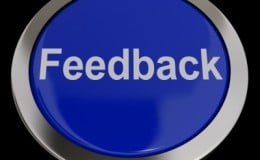In Praise of More Meetings
What’s needed are more meetings. Everyone in any kind of growing company should be in some kind of five to 15-minute focused, purposeful meeting on a regular basis. Yes, I know everyone is busy, and we’ve learned to hate meetings. But not the kind of short and focused meetings I’m talking about.
Even if it’s only by cell phone or conference call, meetings are essential for focus, engagement, and energy. Business leaders have a powerful tool at hand when they use daily huddles to create high team performance. Here are just three ways short focused meetings produce results. They use:
- Peer pressure to get engagement
- Collective intelligence to stimulate ideas
- Clear communications for focused action
When people can trust their leaders to follow through, when people are acknowledged for what they have accomplished, when an honest discussion of priorities and workload takes place, it can go a long way towards removing apathy or possible resentment.
The meetings I’m talking about save you time. It eliminates busyness for the sake of appearing busy. It orients people’s efforts toward creating progress and outcomes.
One of the best books about this is Mastering the Rockefeller Habits by Verne Harnish. Here’s how he suggests structuring these powerful short daily or weekly meetings:
- Start on time
- Set a time such as 8:06 or 4:47, as people do a better job of being on time when it’s not on the half or quarter hour
- Use apps to remind about the meeting
- Make on-time attendance mandatory
- Avoid sitting comfortably, try standing up or perch on stools
- Avoid problem solving; this is more for problem identification and task management
- End on time
The agenda should regularly consist of three items:
- What’s up?
- What are the measures?
- Where are you stuck?
People start with five minutes of what’s happening, which lets everyone sense conflicts, crossed agendas and missed opportunities. Then the entire group takes a quick look at whatever regular measurement your company uses to track its progress.
The third and most important agenda item is looking at where people are stuck. Where are the bottlenecks? Avoid wasting time and energy on things that aren’t crucial to the business. Busy productive people get stuck pretty regularly. But avoid drifting into problem solving. That’s meant to happen outside of the meeting.
The meeting needs to be kept short and on schedule. When this happens, you’ll get more productivity and less resistance to attendance. What’s your opinion?









